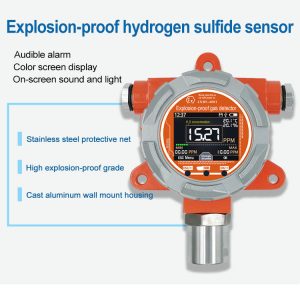-
What are the 4 types of gas detector
- Gas detectors are vital tools used to monitor and detect the presence of hazardous gases in various environments. They play a crucial role in ensuring safety in industries such as oil and gas, chemical manufacturing, mining, and firefight……
- Chat Online
-
Description
Gas detectors are vital tools used to monitor and detect the presence of hazardous gases in various environments. They play a crucial role in ensuring safety in industries such as oil and gas, chemical manufacturing, mining, and firefighting. Gas detectors provide early warning signs of gas leaks, enabling prompt action to protect lives and property. There are several types of gas detectors available, each designed for specific applications and gas detection requirements. This article aims to explore the four main types of gas detectors, their working principles, applications, and advantages.

Catalytic Bead (Combustible Gas) Detectors:
Catalytic bead detectors are primarily used to detect combustible gases or vapors. They operate based on the principle of catalytic combustion. The sensor consists of two coils with platinum wire beads coated with a catalyst. When combustible gases come into contact with the beads, they are oxidized, producing heat. This increase in temperature changes the resistance of the platinum wire, which is then measured by the detector. The higher the gas concentration, the greater the heat generated, causing a larger change in resistance.
Electrochemical (Toxic Gas) Detectors:
Electrochemical gas detectors are specifically designed to detect toxic gases, such as carbon monoxide, hydrogen sulfide, chlorine, and ammonia. These detectors employ electrochemical cells that undergo chemical reactions when exposed to targeted gases. The reaction produces an electric current that is proportional to the gas concentration, allowing for accurate measurement.
Infrared (IR) Gas Detectors:
Infrared gas detectors utilize infrared radiation to detect the presence of certain gases. These detectors consist of an infrared source that emits radiation at specific wavelengths, and a detector that measures the intensity of the radiation after it passes through the sample gas. Different gases absorb infrared radiation at different wavelengths, allowing for selective detection.
Photoionization (PID) Detectors:
Photoionization detectors are used to detect volatile organic compounds (VOCs) and other gases with low ionization potentials. These detectors employ ultraviolet (UV) light to ionize gas molecules, creating positively charged ions and free electrons. The detector measures the current generated by these ions and electrons, which is proportional to the gas concentration.

Conclusion:
Gas detectors are essential devices for ensuring safety in various industries and environments. Understanding the different types of gas detectors and their working principles is crucial for selecting the most suitable detector for specific applications. Catalytic bead detectors are ideal for combustible gas detection, electrochemical detectors excel in toxic gas detection, infrared detectors offer selective detection capabilities, and photoionization detectors are effective for detecting volatile organic compounds. By utilizing the appropriate gas detector, potential hazards can be identified early, enabling timely action to protect personnel and property from the dangers associated with gas leaks.
-
Recommend:
-
-
Gas detectors are essential devices used to detect and moni…
-
Gas sensors are electronic devices that detect, measure, an…
-
Gas detectors are essential safety tools that detect the pr…
-
Where is the gas detector mainly used
Gas detectors are essential safety tools that detect and mo…
-
 : +86 155 8830 2704
: +86 155 8830 2704 : jxdziot@gmail.com
: jxdziot@gmail.com
